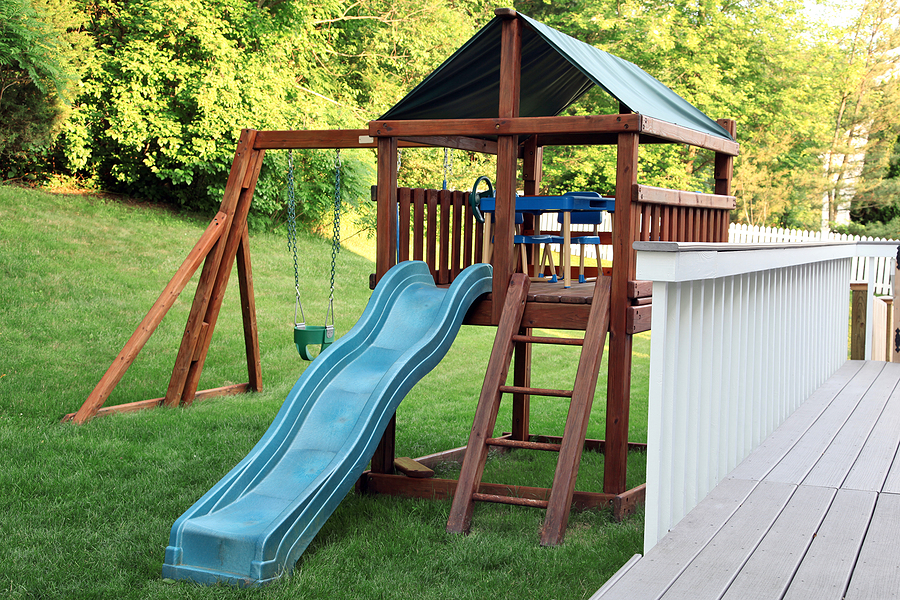Posted by Sandpaper America on Apr 30th 2024
The Ultimate Sandpaper Guide for Wooden Playset Restoration
Wooden playsets offer a world of imagination and adventure for children but maintaining them can be a challenge for parents and DIY enthusiasts. Over time, weather conditions and regular use can wear down the wood, making it necessary to restore it to its former glory. The key to revitalizing a wooden playset lies in a tool you might not expect to be so powerful: sandpaper. Not only can sandpaper bring smoothness back to rough edges, but it also prepares the surface for repainting or staining, essentially offering a new life to your beloved playset.

Understanding Sandpaper
Before you don a pair of gloves and start sanding away, it's crucial to understand the basics of sandpaper. Sandpaper isn’t just a piece of paper with some grit on it; it’s a tool that comes in various types, grits, and materials, each suited for different tasks.
Types: There are several types of sandpaper, including aluminum oxide, silicon carbide, and ceramic alumina. For wooden playsets, aluminum oxide is typically the best choice due to its durability and ability to handle wood surfaces.
Grits: Sandpaper grit refers to the size of the abrasive materials on the paper. The lower the grit number, the coarser the sandpaper. Coarse grits (like 40 to 60 grit) are best for removing old paint or smoothing out rough surfaces. Medium grits (80 to 120) are suitable for more detailed smoothing, while fine grits (150 to 220) are perfect for finishing touches and preparing for staining or painting.
Materials: Sandpaper can be made from various materials, each with its own set of benefits. Paper backing is common, but for tougher jobs, cloth-backed sandpaper might be a better option due to its durability.
Choosing the Right Sandpaper
Selecting the right sandpaper for wooden playset restoration is pivotal. Consider the current condition of the wood and the finish you desire. Start with coarse grits to remove any old finish and smooth out major imperfections. Gradually work your way up to finer grits for a smooth, ready-to-paint surface. Remember, skipping grits can result in scratches that are hard to remove, so progress gradually.
Sanding Techniques
Proper sanding technique is vital for the success of your restoration project. Here are some step-by-step instructions to ensure effectiveness and safety:
- Safety First: Always wear a dust mask and safety goggles to protect yourself from wood dust.
- Start with a Test: Before you begin, test the sandpaper on a small, inconspicuous area of the playset to ensure it doesn’t cause damage.
- Use the Right Motion: Sand in the direction of the wood grain to avoid creating scratches across the grain.
- Change Sandpaper Often: Don’t wait for the sandpaper to wear down completely before changing it. Fresh sandpaper makes the job quicker and more efficient.
- Check Your Progress: Wipe down the wood with a tack cloth or slightly damp rag to remove dust and check your progress. This step is essential before moving to a finer grit.
Tips for a Professional Finish
Achieving a professional finish isn't just about sanding. Here are additional tips to enhance your playset restoration:
- Prepare the Wood: Before starting your project, make sure the wood is dry and clean.
- Avoid Sanding Mistakes: Don’t rush the sanding process. Taking your time will result in a smoother finish.
- Final Touches: After sanding, consider applying a wood conditioner before staining or priming and painting. This step helps ensure an even, polished look.
Conclusion
Restoring a wooden playset is a rewarding project that not only revitalizes the playground but also ensures safety and durability for years to come. Understanding the role of sandpaper in this process, from the types and grits to the proper techniques, can transform your DIY restoration into a professional-level endeavor. Grab your sandpaper and prepare for a wonderful weekend project that’s sure to bring endless joy and pride in your work. Remember, the joy of a beautifully restored wooden playset goes beyond aesthetics; it's about creating a safe and inviting space for your children to imagine, play, and grow.
Looking for quality sandpaper products? Look no further than Sandpaper America! Contact Sandpaper America at 1-800-860-7263 (SAND) to order online or over the phone today! We supply custom sandpaper orders and supplies to businesses and consumers alike.
Related Posts:
How
to Sand Down an Old Rocking Chair
Transform
Your Antique: DIY Guide to Sanding Wood Furniture
Learn
the Basics of Sanding Techniques for Furniture Projects

